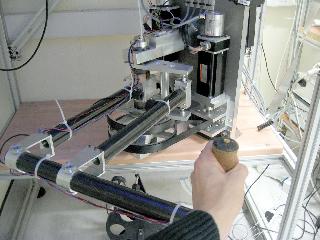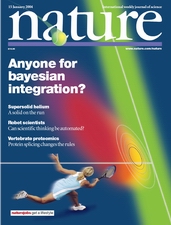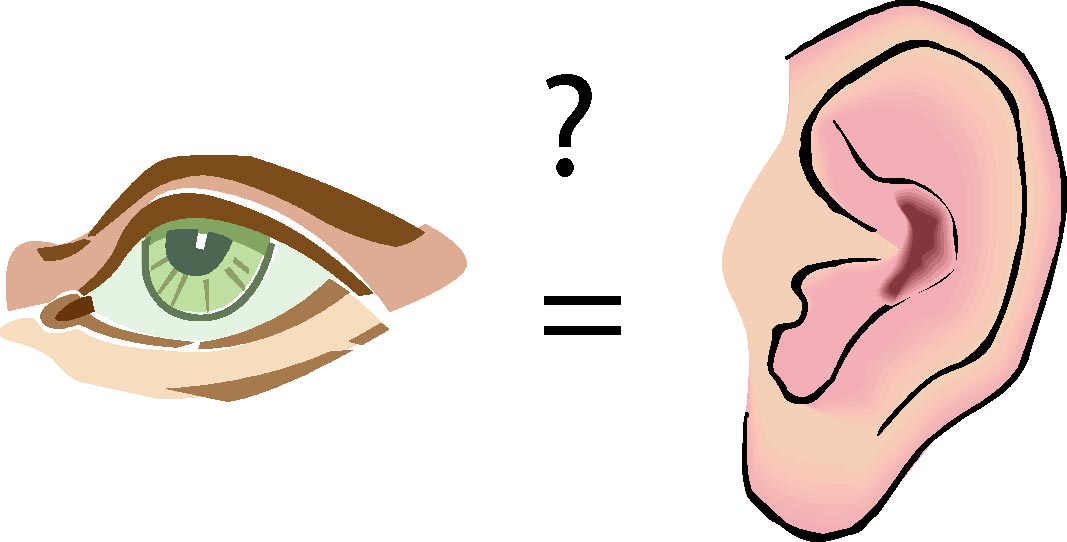Probabilistic processing in the sensorimotor system

Most decisions in our lives are done in the presence of uncertainty. When I play an approaching tennis ball I will not exactly know where it will land on the court. When I want to know if someone is my friend I will have to estimate this. If I am a doctor and I want to know the disease that a patient has I have to do an informed estimate. And equally if I move my arm I will have to estimate where exactly in space it is.
A branch of mathematics, Bayesian statistics, allows optimally estimating variables in the presence of uncertainty, even if one has prior knowledge of some properties of the system or several sensors. This theory can be proven to be mathematically optimal and many modern artificial intelligence applications such as speech recognition use these methods.
 In my studies I show that people when they move their hands use exactly the
same mathematical tricks. I can show that people intuitively use Bayes-rule.
In my studies I show that people when they move their hands use exactly the
same mathematical tricks. I can show that people intuitively use Bayes-rule.
Körding, KP. and Wolpert, D. (2004) Bayesian Integration in Sensorimotor Learning, Nature 427:244-247 [pdf]
Bayes rule goes back to
Reverent Thomas Bayes (1701-1761) whos essays were published
after his death by the Royal Society. It however only made any impact after it
got independently discovered by the French mathematician Laplace.
Understanding the world to understand the brain
 The brain works and evolved in the natural world surrounding us. We thus believe that
properties of the real world must be
reflected in the
brain's organization. We believe
that the brain learns to optimally deal with the
properties of the real world.
We believe that we must understand these properties, in order to
understand the brain.
We thus analyze what people and animals see.
The brain works and evolved in the natural world surrounding us. We thus believe that
properties of the real world must be
reflected in the
brain's organization. We believe
that the brain learns to optimally deal with the
properties of the real world.
We believe that we must understand these properties, in order to
understand the brain.
We thus analyze what people and animals see.
Cat-cam project : What cats see
 We want to find out what cats are interested in. To find out what they
look at we mount a miniture CCD to their heads.
We then have them
explore the local park and record videos of the world from a cat's perspective.
We want to find out what cats are interested in. To find out what they
look at we mount a miniture CCD to their heads.
We then have them
explore the local park and record videos of the world from a cat's perspective.
avi divx compression (high quality 4M)
realplayer (low quality, 3M)
We then analyze what cats see using these cat-cam videos.
The brain is optimally adapted to the properties of the real world
 We feed our videos into a neural network. Neurons in our simulation try to
encode pictures in an optimal way. The optimal neurons behave
similarly to real neurons (simple and complex) in the visual system.
We feed our videos into a neural network. Neurons in our simulation try to
encode pictures in an optimal way. The optimal neurons behave
similarly to real neurons (simple and complex) in the visual system.
The same algorithm is useful for hearing too
 We use the very same simulation with the same neurons. But this time we feed it with
data from a simulated inner ear
instead of videos. Once again we can replicate much
data from the auditory system.
We use the very same simulation with the same neurons. But this time we feed it with
data from a simulated inner ear
instead of videos. Once again we can replicate much
data from the auditory system.
It could be that the neurons in the brain that deal with hearing and seeing are in fact identical --- except that they learn from different inputs.
For more information see Publications and the homepage of Konrad Paul Körding. The research summarized here was mostly performed at INI.
Further Links
Interdisciplinary Research in Switzerland
Looking back at a year of working and interacting at Collegium Helveticum.new >>> Hörspiel
The radio play "hoerspiel" of the Collegium Helveticum is finally finished and available from the author upon request.A colleagues opinion on where society and neuroscience are going to
Tony Bell : Levels and loops: the future of artificial intelligence and neuroscience. Counter
